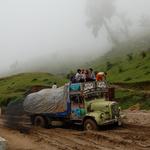Kinship, Caste, and Health: Illness and Treatment in Upland Orissa
This paper investigates whether an individual’s relationship to the head of household and caste are associated with the level of his or her morbidity and, in the event of illness, the treatment received. Surveys of 279 households drawn from 30 villages in a region of upland Orissa were conducted in 2010 and 2013, yielding an unbalanced panel of 1578 individuals, 1077 of whom were present in both years. Whether judged by morbidity as the final outcome or two measures of treatment in the event of sickness, there is no evidence that female kin fared worse than their male counterparts – except in the inherent difference arising from pregnancy. The upcoming generations of children and grandchildren enjoyed better outcomes, regardless of their sex and controlling for age. Members of the Other Backward Caste group enjoyed both better chances of getting treated in a hospital and lower morbidity than their Scheduled Tribe and Scheduled Caste counterparts. Viewed overall, the treatment an individual received depended rather on the characteristics of the family’s village – its topography and its place within the network of health facilities and all-weather roads


